#Simlipal Tiger Reserve
Text
Rare Black Tiger marking its territory in Odisha
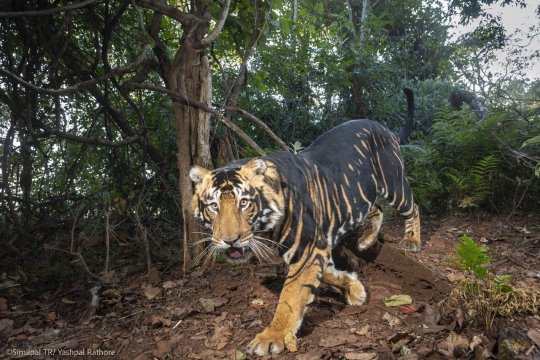


Technically called the melanistic tigers, they are exclusively found in Simlipal Tiger Reserve of Odisha.
As per the latest census their total count is only 10.

#tiger#black tiger#indian tiger#animals#big cats#photography#nature#melanistic tigers#Odisha#Simlipal Tiger Reserve
301 notes
·
View notes
Text
Discover the Hidden Gems of Odisha with Our Exclusive Holiday Packages
Odisha, also known as the "Soul of India," is a land of rich cultural heritage, ancient temples, pristine beaches, and breathtaking natural beauty. This eastern state of India is often overlooked by tourists, but those who venture here are rewarded with a treasure trove of hidden gems. If you are looking for a unique and off-the-beaten-path travel experience, our exclusive holiday packages in Odisha are the perfect choice. Whether you want to explore ancient temples, soak in the beauty of nature, or witness the vibrant wildlife, Odisha has something to offer for everyone.

Introduction to Odisha and its Hidden Gems
Nestled on the eastern coast of India, Odisha is a state that has managed to preserve its rich cultural heritage and natural beauty. From ancient temples to tribal villages, Odisha is a land of diverse cultures and traditions. The capital city, Bhubaneswar, is known for its majestic temples that date back to the 7th century. The famous Lingaraj Temple and the Sun Temple at Konark are architectural marvels that attract visitors from all over the world.
But Odisha is not just about temples. It is also home to some of the most beautiful beaches in India. The Puri Beach, with its golden sand and clear blue waters, is a popular destination for beach lovers. The beach is also known for the annual Rath Yatra, where thousands of devotees pull the chariots of Lord Jagannath, Lord Balabhadra, and Devi Subhadra.
Popular Tourist Destinations in Odisha
While the temples and beaches are the highlights of Odisha, there are many other tourist destinations that are worth exploring. The city of Cuttack, known as the "Silver City," is famous for its filigree work and the famous Durga Puja festival. The Chilika Lake, Asia's largest brackish water lagoon, is a paradise for bird watchers and nature enthusiasts. The lake is home to a variety of migratory birds, including flamingos, pelicans, and herons.
Another hidden gem of Odisha is the Simlipal National Park, which is one of the largest tiger reserves in India. The park is home to a diverse range of flora and fauna, including elephants, leopards, deer, and more than 200 species of birds. The Nandankanan Zoological Park, located near Bhubaneswar, is another must-visit destination for wildlife lovers. The park is famous for its white tigers and is also home to a variety of other animals, including lions, giraffes, and chimpanzees.
Odisha's Natural Wonders and Wildlife Sanctuaries
Apart from the popular tourist destinations, Odisha is blessed with natural wonders and wildlife sanctuaries that are waiting to be explored. The Satkosia Gorge, located on the Mahanadi River, is a breathtakingly beautiful gorge that offers stunning views of the surrounding hills and forests. The Bhitarkanika National Park, a unique mangrove ecosystem, is home to the endangered saltwater crocodile and the Olive Ridley sea turtles. The park also has a rich variety of flora and fauna, including various species of birds, snakes, and deer.
For those seeking spiritual solace, the peaceful town of Daringbadi is a perfect getaway. Known as the "Kashmir of Odisha," Daringbadi is nestled in the hills of the Eastern Ghats and is blessed with scenic beauty and pleasant weather throughout the year. The town is surrounded by coffee plantations, pine forests, and waterfalls, making it an ideal destination for nature lovers.
Conclusion: Why Choose Our Travel Agency for Your Odisha Vacation
With its rich cultural heritage, natural beauty, and hidden gems, Odisha is a destination that should not be missed. Our travel agency in Puri specializes in creating exclusive holiday packages that cater to your specific interests and preferences. Whether you want to explore the ancient temples, relax on the pristine beaches, or embark on a wildlife adventure, we have the perfect itinerary for you.
By choosing our travel agency, you can rest assured that your Odisha vacation will be hassle-free and memorable. We take care of all the details, from accommodation to transportation, so that you can focus on enjoying your trip. Our experienced guides will accompany you throughout your journey, providing you with insights into the rich history and culture of Odisha.
If you want to uncover the hidden gems of Odisha and create lifelong memories, visit our website bbsrtravels.com and book your exclusive holiday package today. Experience the magic of Odisha with us and embark on a journey of discovery like no other.
#holiday packages in Odisha#traveling#car rental in bhubaneswar#travel#car rental#travel agency#travel agency in bhubaneswar
0 notes
Text
youtube
Watch the American Climate Leadership Awards 2024 now: https://youtu.be/bWiW4Rp8vF0?feature=shared
The American Climate Leadership Awards 2024 broadcast recording is now available on ecoAmerica's YouTube channel for viewers to be inspired by active climate leaders. Watch to find out which finalist received the $50,000 grand prize! Hosted by Vanessa Hauc and featuring Bill McKibben and Katharine Hayhoe!
#ACLA24#ACLA24Leaders#youtube#youtube video#climate leaders#climate solutions#climate action#climate and environment#climate#climate change#climate and health#climate blog#climate justice#climate news#weather and climate#environmental news#environment#environmental awareness#environment and health#environmental#environmental issues#environmental justice#environment protection#environmental health#Youtube
7K notes
·
View notes
Text
Melanistic Tiger Safari
Odisha is set to unveil the world's first melanistic tiger safari near the Similipal Tiger Reserve (STR).
Odisha's Vision for the Melanistic Tiger Safari
- Melanism and Melanistic Tiger: Melanism is a genetic condition, that results in increased melanin production, leading to black or nearly black skin, feathers, or hair in animals.
- The Royal Bengal Tigers of Similipal boast a distinctive lineage with elevated melanin levels, giving rise to black and yellow interspersed stripes, making them pseudo-melanistic.
- According to the All India Tiger Estimation, 2022, Similipal Tiger Reserve houses 16 tigers, with 10 of them displaying melanistic traits.
- Location of Safari: Spanning approximately 200 hectares near Dhanbad-Balasore National Highway-18, the safari site lies in close proximity to STR, providing a landscape akin to Simlipal.
- In the beginning, three melanistic tigers from Nandankanan Zoo, along with rescued or orphaned tigers, will occupy the open enclosures of the safari.
- Objective: It aims to raise awareness about the conservation needs of melanistic tigers, providing a platform for researchers and enthusiasts to engage with these rare big cats.
- Approval: The project necessitates approvals from the Central Zoo Authority and other regulatory bodies overseeing wildlife initiatives in the country.
- A National Tiger Conservation Authority committee will also conduct a feasibility study of the proposed site before granting final clearance.
Other Colour Variations in Tigers
- Orange with Black or Brown Stripes: This is the most common and widely recognized tiger coloration, e.g, the Royal Bengal Tiger.Each tiger's stripe pattern is unique, serving as a form of camouflage, in their natural habitat.
- White Tigers: They are not considered a separate subspecies. The colour of the white tiger's fur is the result of a genetic mutation called leucism.Leucism is a genetic condition that results in reduced pigmentation in animals, causing them to have white or pale-colored skin, feathers, fur, or scales.
- Golden Tigers: They are also not considered a subspecies of tigers because their golden colour variation is caused by the presence of a recessive gene called "wideband".The wideband gene reduces melanin production during the cycle of hair growth.Recently, it was spotted in Kaziranga National Park.
Similipal Tiger Reserve
- Location: Similipal is situated in the Deccan Peninsula Biogeographic Zone.
- Vegetation: Predominantly moist mixed deciduous forest with tropical semi-evergreen patches and sporadic dry deciduous forests and grasslands.
- Floral Richness: Holds 7% of India's flowering plants and 8% of its orchid species.
- Faunal Diversity: Home to 55 mammal species, 361 bird species, 62 reptile species, 21 amphibian species, and numerous insects and microfauna.
- Major species other than tigers include sambar, chital, barking deer, gaur, and mouse deer, leopards, fishing cat etc.
- Management efforts have revived mugger crocodile populations along rivers Khairi and Deo.
- It has also been designated as a Global Network of Biospheres site since 2009.
Read the full article
0 notes
Text
Take a look at some of the best tourist places in Odisha. While some of these are known names, others are quite uncommon.
Bhubaneswar – Land Of Beautiful Architecture
Puri – Witness The Unique Sand Art
Konark – Ancient Temples
Cuttack – The Vintage City
Bargarh – Explore The Mythological Treasures
Jeypore – Gaze At The Famous Waterfall
Barbil – See The Magnificent Waterfall
Paradip – The Famous Sea Port
Rourkela – One Of The Largest Cities
Sambalpur – A Haven For Nature Lovers
Chandipur – Home To Sea Turtles
Pipli – The Town Known For Handicrafts
Roopark Village – The Eco-Friendly Resort
Taptapani – The Hot Water Spring
Atri – The Place To Relax
Baripada – Cultural Centre Of Odisha
Gopalpur – The Beautiful Port Town
Berhampur – The Temple Town
Dhauli – The Land Of Peace Pagoda
Daringbadi – The Hill Town
Talasari Beach – Relax Under The Sun
Tikarpada Wildlife Sanctuary – Enjoy The Wilderness
Rayagada – The Land Of Historical Gems
Shree Jagannath Temple: Witness the famous Rath Yatra
Lingaraja Temple: The oldest and the largest temple in the city
Chilika Lake: Largest brackish water lake
Simlipal National Park: Witness the famous Bengal Tiger
Hirakud Dam: The longest dam in India
Khandagiri Caves: Explore the beautiful motifs and carvings
Satkosia Tiger Reserve: Explore the diverse flora and fauna
#touristplacesodisha#Touristplacesodishaforcouples#Top5touristplacesodisha#Top10touristplacesodisha#placestovisitodishaduringwinter#odishatouristplaceslistdistrictwise#besttouristplacesodishaduringsummer#bestnaturalplacesodisha
0 notes
Text


Simlipal is a tiger reserve in the Mayurbhanj district in the Indian state of Odisha covering 2,750 km². It is part of the Mayurbhanj Elephant Reserve, which includes three protected areas—Similipal Tiger Reserve, Hadgarh Wildlife Sanctuary with 191.06 km² and Kuldiha Wildlife Sanctuary with 272.75 km².
for more details, please visit www.puriholidays.com
0 notes
Text
Tiger, Project Tiger and its Future
Tigers are one of the most majestic and iconic animals in the world, and Odisha is home to a significant population of these big cats. However, due to habitat loss and poaching, the tiger population in Odisha has been declining over the years.
To address this issue, the Indian government launched Project Tiger in 1973, with the aim of conserving and protecting the tiger population in the country. Odisha has been an active participant in this project, and several tiger reserves have been established in the state, including the Simlipal Tiger Reserve and the Satkosia Tiger Reserve.
Despite these efforts, the future of tigers in Odisha remains uncertain. The state government needs to take more proactive measures to protect the tiger population and their habitats. This includes increasing the number of forest guards, cracking down on poaching and illegal wildlife trade, and promoting sustainable tourism practices.
In conclusion, tigers are an integral part of Odisha's biodiversity and cultural heritage. It is our responsibility to ensure that these magnificent animals continue to thrive in the wild for generations to come. By working together and taking concrete steps to protect tigers and their habitats, we can secure a brighter future for these majestic creatures.
0 notes
Text

Simlipal Tiger Reserve (STR)
#Odisha#simlipaltigerreserve#tigerreserve#Tigers#upsc#upscprelims2024#upsc2024#upscprelims#upscpreparation#upsc2023#upscexam#currentaffairs#dailycurrentaffairs#generalknowledge#dailynews
0 notes
Text
Wildlife Tour Odisha: Exploring the Rich Biodiversity of Eastern India

Odisha, located in the eastern part of India, is a state filled with wonder and beauty. Its rich cultural heritage, ancient temples, and pristine beaches inspire us to explore and appreciate the world around us. Let us embrace all the beauty and wonder that this world has to offer, starting with the diverse and wondrous state of Odisha.
However, what many people do not know is that Odisha is also home to a diverse range of wildlife and natural habitats. From dense forests to wetlands and coastal ecosystems, Odisha has it all. A wildlife tour of Odisha is an excellent way to explore the state's biodiversity and witness some of the rarest species of flora and fauna in their natural habitat.
The Simlipal National Park: A Haven for Tigers and Elephants
Simlipal National Park, located in the Mayurbhanj district of Odisha, is one of the most popular wildlife destinations in the state. The park is spread over an area of 2,750 sq km and is home to a diverse range of wildlife, including tigers, elephants, leopards, and wild boars. The park's diverse range of bird species offers an exciting opportunity for birdwatching enthusiasts to witness nature's beauty and diversity in its purest form. The park is truly a paradise for those who share a passion for birdwatching, and it inspires us to cherish and preserve the wonders of the natural world.
The park is named after the Simlipal hill range, which is a part of the Eastern Ghats. The park's topography is characterized by hills, waterfalls, and dense forests. The park's vegetation includes tropical semi-evergreen forests, moist deciduous forests, and grasslands. The park's most popular attraction is the Barehipani waterfall, which is the second-highest waterfall in India.

The Chilika Lake: A Birdwatcher's Paradise
Chilika Lake, located in the Puri district of Odisha, is the largest brackish water lake in Asia. The lake is spread over an area of 1,100 sq km and is home to a diverse range of aquatic life, including dolphins, crabs, and prawns. However, what makes Chilika Lake truly special is its birdlife. The lake is a wintering ground for several migratory bird species, including flamingos, pelicans, and storks.
Take a trip to Chilika Lake during the months of November to February and witness the breathtaking sight of migratory birds. It's the perfect opportunity to connect with nature and be inspired by the beauty of the world around us. Don't miss out on this incredible experience. Visitors can take a boat ride to explore the lake and witness the birdlife up close.
Visitors have the unique opportunity to witness the traditional fishing practices of the locals in the fishing villages that surround the beautiful lake. This not only provides an educational experience but also reminds us of the importance of preserving cultural practices and traditions.

The Bhitarkanika National Park: A Mangrove Ecosystem
Bhitarkanika National Park, located in the Kendrapara district of Odisha, is a unique ecosystem that is home to the largest mangrove forest in India. The park is home to several species of flora and fauna, including saltwater crocodiles, spotted deer, and kingfishers.
The park's topography is characterized by mangrove forests, rivers, and creeks. Visitors can take a boat ride to explore the park's waterways and witness the crocodiles basking in the sun. The park is also home to several species of turtles, including the Olive Ridley turtle, which nests on the park's beaches.

The Satkosia Tiger Reserve: A Gorge on the Mahanadi River
Satkosia Tiger Reserve, located in the Angul district of Odisha, is a unique wildlife destination that is home to several species of wildlife, including tigers, leopards, and elephants. The reserve is spread over an area of 963 sq km and is characterized by the Satkosia gorge on the Mahanadi river.
The reserve's topography is characterized by hills, forests, and waterfalls. Visitors can take a boat ride on the Mahanadi river to explore the reserve and witness the wildlife up close. The reserve is also home to several species of birds, making it a paradise for birdwatchers.
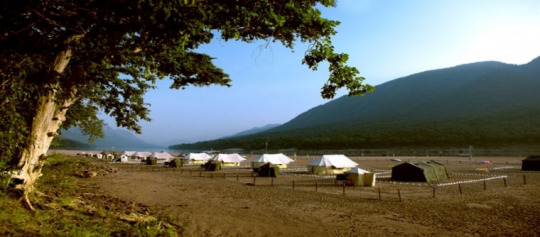
Conclusion
Odisha's rich biodiversity and natural habitats make it an excellent destination for wildlife enthusiasts. From tigers and elephants to migratory birds and crocodiles, Odisha has it all. A wildlife tour of Odisha is an excellent way to explore the state's natural beauty and witness some of the rarest species of flora and fauna in their natural habitat.
Book Your Odisha Tour Packages form SwostiIndia.
0 notes
Text
SIMLIPAL (ODISHA)

This travelogue in Bengali is based on tour to Simlipal tiger reserve, in Mayurbhanj district of Odisha. I tried to capture the majestic beauty of the forest along with few essential information in this travelogue.
For more details: https://exoticbongfamilytraveller.com
0 notes
Text
Baripada Tourism
Baripada Tourism
At a distance of 248km from Kolkata and 256km from Bhubaneshwar, Baripada is a city, recognised by its beautiful culture and an essence of purity in nature. Its Rath Yatra is considered the biggest and oldest after Puri and thus Baripada is also known as Dwitiya Srikhetra (Second Puri)
It is host to the world famous Car Festival (Rathyatra) which allows only women to pull the Rath of Maa Subhadra and gathers huge crowds. One also finds here temples, known to be one of the oldest in Odisha and which see devotees coming from all over with a stong sense of faith and devotion. An event is organised here, during the mid of April that celebrates the best talents of Chhau, a world renowned dance form, indigenous to the region. Baripada is also known for its Bangripori "tusser" fabric, that can be found anywhere in its local markets. Also, do not miss the Simlipal Nature Park which has a tiger reserve, sparkling waterfalls, numerous species of animals and birds, Semul or red silk cotton trees and countless other things to leave you awestruck.
Odisha History Book Available Here
0 notes
Photo


Vehicle rally for conservation of tigers flagged offs
The rally will journey across 51 tiger reserves and 18 tiger States. A vehicle rally titled ‘India for Tigers- A Rally on Wheels’ is being organized by the Forest Department under the aegis of the National Tiger Conservation Authority from September 25 to October 2, as part of the Central government’s ‘Azadi ka Amrit Mahotsav’ celebrations. The rally has already started from Nagarjunasagar Tiger Reserve and will cover Amrabad Tiger Reserve, Kawal Tiger Reserve, and Satkosia Tiger Reserve before ending at Simlipal Tiger Reserve, where a celebration will be held on October 2.
#vehicle#rally#tigers#tiger reserve#National Tiger Conservation#Azadi ka Amrit Mahotsav#Nagarjunasagar Tiger Reserve#Amrabad Tiger Reserve#Kawal Tiger Reserve#Satkosia Tiger Reserve#Simlipal Tiger Reserve
0 notes
Text
youtube
Watch the American Climate Leadership Awards 2024 now: https://youtu.be/bWiW4Rp8vF0?feature=shared
The American Climate Leadership Awards 2024 broadcast recording is now available on ecoAmerica's YouTube channel for viewers to be inspired by active climate leaders. Watch to find out which finalist received the $50,000 grand prize! Hosted by Vanessa Hauc and featuring Bill McKibben and Katharine Hayhoe!
#ACLA24#ACLA24Leaders#youtube#youtube video#climate leaders#climate solutions#climate action#climate and environment#climate#climate change#climate and health#climate blog#climate justice#climate news#weather and climate#environmental news#environment#environmental awareness#environment and health#environmental#environmental issues#environmental justice#environment protection#environmental health#Youtube
7K notes
·
View notes
Link
#burning issues#green AG project#simlipal black tigers#similipal biosphere reserve park#chemical based farming
0 notes
Photo
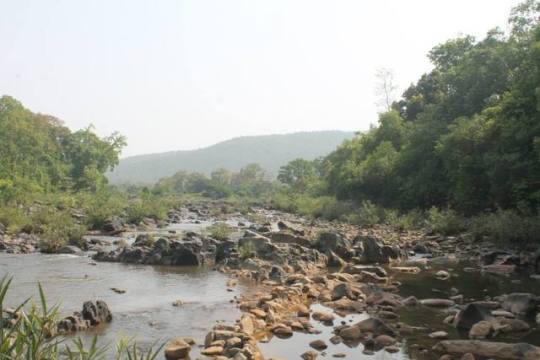


Simlipal Tour Package from kolkata
Simlipal National Park is a national park and a tiger reserve in the Mayurbhanj district in the Indian state of Odisha.
1 note
·
View note
Text
A quotation from ecosocialist geographer Christopher R. Cox’s review of a 2016 book by Ursula K. Heise: Imagining Extinction: The Cultural Meanings of Endangered Species. The text explores the problems with thinking of “Nature” as separate from “the human”; problems with anti-humanism among radical ecologists; solarpunk and speculative fiction as a vehicle for positive reframing of human-nature relationships; a survey of “biopolitical” authors like Donna Haraway and Bruno Latour; differences between “animal welfare” and “animal rights”; the shallowness of the “global conservation industrial complex”; how neoliberals/reactionaries disregard indigenous autonomy in conservation; and indigenous environmental knowledge in making ecological decisions.
--
At a time when the destructiveness of human beings, as a crudely unified force of nature, is bulldozed across the digital and analog spheres of life on Earth, Imagining Extinction (2016) challenges liberal elitist narrations of the endangerment of ‘culturally significant species’. Instead of seeking to convince the reader of their moral or ethical duty to care about the potential disappearance of our animal friends, Ursula K. Heise pushes for a critical questioning of how the phenomenon of the ‘endangered species’ is culturally produced, and even beyond that, how this cultural production is, in many cases, used as a tool for many processes that are in and of themselves technics of further endangerment, such as the wretched uses of ‘charismatic megafauna’ in the production of commodities (think: coffee cups with polar bears on them). (…)
The vast majority of the works, both of fiction and non-fiction, which address the supposedly already ongoing ‘sixth’ mass extinction (Leakey and Lewin 1995; Barnosky 2014; Kolbert 2015) tend to paint the human species as an accident of history with dire consequences. In one way or another, they tend to think of humans and animals as related, but only through a somewhat hierarchical rendering of humans dominating a passive, helpless, and endangered nature. (...)
It is only through specific historical arrangements of human and extra-human natures that the conditions for industrial agriculture were put in place. The world capitalist system is as much, in my view, the culprit for the systemic torturing of animals on farms and the deforestation of their habitats as the supposedly uniform tendencies of a unified, abstracted, global human species being. (…) (H)er very in-depth analysis of the role of science fiction and speculative fiction (something that also harmonizes well with Haraway’s recent work) make up for a lot of that lost ground in not implicating the systemic narrative that an engagement with capital requires. (...)
A major contribution of this book is the way she brings in the idea of ‘multispecies communities’. Modern scientific forestry, or what Vandergeest and Peluso have called “empiric forestry” (2006a/b) has long been the engine for making the world’s tropical forests more efficient, legible, and productive (Scott 1998). Along the way, European and North American conservationists – in an attempt to control the damage of these fatally flawed ‘ecological assumptions’ – have sought to “limit or terminate local communities’ uses of natural resources” (164), effectively killing off the multispecies communities that were already in advanced existence long before European and otherwise Western forestry began to dominate the forested spaces of the world at the dawn of the eighteenth century in Europe, Asia, South America, and then North America. (…)
She goes into great detail in Chapter 5 about the historical process of separating the human and non-human, or what we might call, in the lexicon of the colonist, the ‘non-savage’ and the ‘savage’. Beginning with the development of the Simlipal Tiger Reserve in the Indian state of Orissa in the early 1980s, a classic case of ‘protecting’ an endangered species with a form of conservation that forces the local culture to make a false decision between ‘organized deforestation’ and ‘complete removal of human settlement and deforestation by tribes.’
--
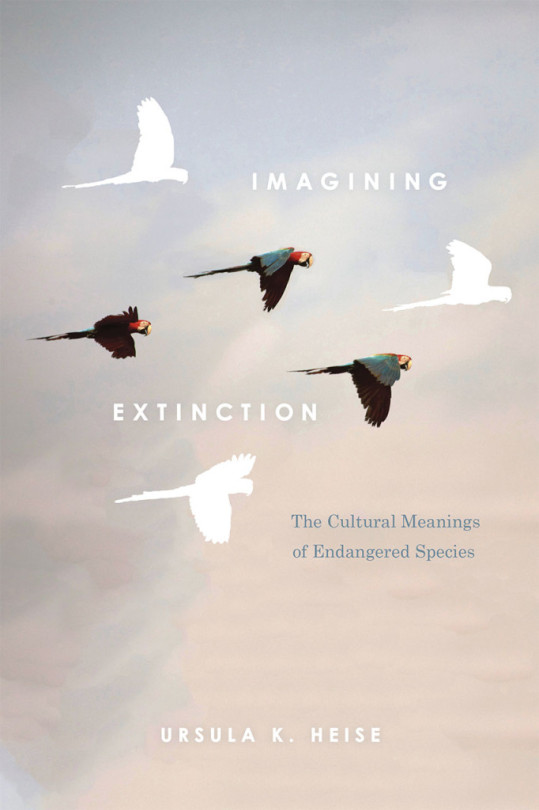
4 notes
·
View notes
Text
Simlipal national park is one of the largest wildlife reserves in India. It is situated in the Mayurbhanj district of north-eastern Odisha. The national park is one of the key attractions of the state.
https://ebhubaneswar.com/outskirts/waterfalls/simlipal-national-park-the-tiger-reserve-odisha-plan-a-trip-today/
0 notes
Photo
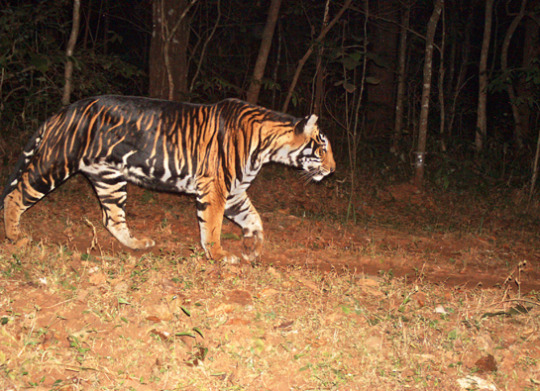
Extremely rare melanistic tiger caught on camera in Simlipal tiger reserve by Wildlife Institute of India. Image via Sanctuary Asia.
56 notes
·
View notes